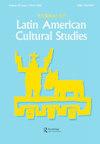Colonial Ruins as Intervened Sites: La Zona, the US Occupation, and Dominican Racialised Sovereignty (1870–1924)
IF 0.3
4区 社会学
Q4 CULTURAL STUDIES
引用次数: 0
Abstract
This article traces the transformation of Dominican colonial ruins into racialised and mediated symbols of “the nation” in consumer culture from the emergence of local nation-building in the 1870s through the country’s first US occupation (1916–1924). It re-examines the work of renowned criollo painter Alejandro Bonilla to show that while the nationalisation of ruins through consumer culture in La Zona (the present-day name for colonial Santo Domingo) fuelled a fin-de-siècle cultural effervescence, this visuality made no effort to conceal the racial difference in the Dominican elite’s fragmented nationalism. Contrasting the elite vision of colonial ruins in La Zona with that of US imperial commodity racism in print culture, the article reveals how after 1916 local intellectuals reframed La Zona’s colonial ruins into an anti-colonial, anti-Black, and Hispanicised state optic for mass consumption. Yet La Zona also allows us to see the histories of Black freedom and resistance inscribed in its colonial ruins, which still stand as records attesting to settler colonialism’s racialised and gendered liminal experiences.殖民废墟的介入:La Zona,美国占领和多米尼加种族化主权(1870-1924)
本文追溯了从19世纪70年代当地国家建设的出现到该国第一次美国占领(1916–1924),多明尼加殖民遗址在消费文化中转变为种族化和中介化的“国家”象征。它重新审视了著名克里奥洛画家亚历杭德罗·博尼利亚的作品,表明尽管拉佐纳(殖民地圣多明各的现名)通过消费文化将废墟国有化,助长了文化的繁荣,但这种想象并没有掩盖多明尼加精英支离破碎的民族主义中的种族差异。文章将拉佐纳殖民废墟的精英愿景与印刷文化中的美国帝国商品种族主义进行了对比,揭示了1916年后,当地知识分子如何将拉佐娜的殖民废墟重新定义为反殖民、反黑人和西班牙裔的国家视觉,供大众消费。然而,La Zona也让我们看到了刻在其殖民废墟中的黑人自由和抵抗的历史,这些历史仍然是证明定居者殖民主义种族化和性别化边缘经历的记录。
本文章由计算机程序翻译,如有差异,请以英文原文为准。
求助全文
约1分钟内获得全文
求助全文

 求助内容:
求助内容: 应助结果提醒方式:
应助结果提醒方式:


